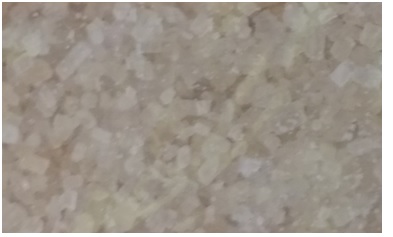Why isn't sugar mentioned in the Bible?
0 sharing


Photo 5: the shadow of the book "Nobutaka's Chef".
How can the originally very rare granulated sugar become a seasoning readily available today? Since the era of great navigation in the 16th century, Europeans have begun overseas conquest and economic plunder, including the production of sugar. In the 17th century, Dutch immigrants built large sugar cane farms in northeastern South America. Britain also occupied the islands of Jamaica and Hispanula (now Haiti) and set up big farms to produce sugar. In the 18th century, Haiti ranked alongside the island of Jamaica as the largest producer of sugar.
In the 18th century, with the surge in sugar production, sugar, which used to be a luxury, became a necessity for Europeans. It is said that the average Englishman consumed between 400 and 500 grams of sugar in 1600, about two kilograms in the 17th century, and increased to seven kilograms in the 18th century. In other words, at least in Europe, sugar has become a sweet taste for ordinary people.
However, the price of the popularity of sugar is the blood and sweat of black slaves. It takes a lot of manpower to grow sugar cane, and the hometown of Europeans cannot provide it, so black slaves are introduced to fill the manpower gap. Needless to say how hard the work of these European slaves plundered from Africa was on sugar cane farms, just transporting slaves from Africa to America was an arduous voyage. William J. Bernstein's Great History of Trade: how Trade shaped the World, a 5,000-year Trade Journey spanning five thousand years from Stone Age to Digital Age, describes the environment of slave ships: "each slave is allocated about four square feet of space on board, which is not as good as a coffin. It is impossible for them to turn or move, stacked in their own puddles of feces and urine in the position of a spoon. In addition, there are poisonous gastrointestinal diseases, festering wounds cut by shackles, not just a few minutes and hours, but weeks in such a disgusting environment. "
Even today, when there are no slaves, the working conditions of sugar cane farms in Central and South America are still poor. In March 2017, newspapers and magazines spread a news that Taiwan in Nicaragua, a country with diplomatic relations with Central America, has been affected by kidney disease of unknown causes in the past 20 years. Many young or middle-aged men have died, and many villages have even become "widow villages." Most of the dead were farmers and workers in sugarcane fields, and experts speculated that a high temperature of more than 40 degrees Celsius and insufficient protection against highly toxic pesticides used in the field were the main cause of the disease. Many children of farmers and workers in sugarcane fields, even if their father and brother die of kidney disease, still have no choice but to work in the sugarcane plantation when they grow up, and continue to be exposed to the hot sun and highly toxic pesticides.
Just because sugar is a readily available product today, it can't be taken for granted that it was so ubiquitous in ancient times. Behind the popularity of sugar is the exploitation of black slaves and the blood and sweat of peasant workers. A God who believes in fraternity and compassion does not want people to squeeze what they regard as inferior races and classes and enjoy the sweet taste with peace of mind.
Reference bibliography
1. Online Bible recovery, http://www.recoveryversion.com.tw/Style0A/026/bible_menu.php.
2. Cheng Sheng Miyazaki, translated by Chen Baiyao, the World Food History you must not know, New North: hiking Culture, 2013.
3. Takagawa Zhuo Lang, Nishimura Man, translated by Xu Renju, the Chef of Nobutaka, Taipei: Dongli Publishing House, 2017.
4. By William J. Bernstein, translated by Pan Xun. The Great History of Trade: how Trade shaped the World, from Stone Age to Digital Age, Trade Journey spanning 5, 000 years. New North: big Brand Publishing, 2018.
- Prev

Cattle and sheep breeding technology: promoting the popularization of independent and rapid detection of infectious diseases in cattle and sheep
Arthritic encephalitis in goats and leukemia in cattle (cattle do not have CAE). Common infectious diseases in two cattle and sheep often cause economic losses to farmers, while dairy farmers and sheep farmers often do not know how to develop without plugging in.
- Next

Development of agricultural products processing industry: what is the current situation of agricultural products processing development? The Prospect of Agricultural products processing
2019 is Taiwan's version of the "first year of local birth." the government's grand strategy is very clear, and its aim is to rebuild the population structure in rural areas that is on the verge of collapse, so as to prevent the living functions of local society from gradually fading into stumbling "disabled people." But for
Related
- A course of planting techniques and methods on how to grow carrots
- How to plant the latest tulips?
- Is it better to pick tea in the morning or in the afternoon? When is the best time for tea to be picked? what is the third or fifth tea?
- Launch Yuanxiao Happy combination Haocha + Tea Yuan healthy Taste
- Penghu Tourism "Fireworks 20 Parade with You"
- 2022 West Lake Happiness holds "Digital Revitalization Voucher" and draws iphone13 and laptop.
- Banqiao Fuzhou social houses are designed to change start-up combined with police elimination to create a safe and livable environment
- The convenient measure of "mechanical weeding" in Xinbei has been abused and the Agriculture Bureau has imposed heavy penalties on the illegal land consolidation.
- Changgeng University Joins Hands with Four Memory Factories to Rescue Memory Talent Shortage
- The list of Taiwan's top 100 MVP managers is listed by the Director-General of the Farmers' Association of Sanxia District.

